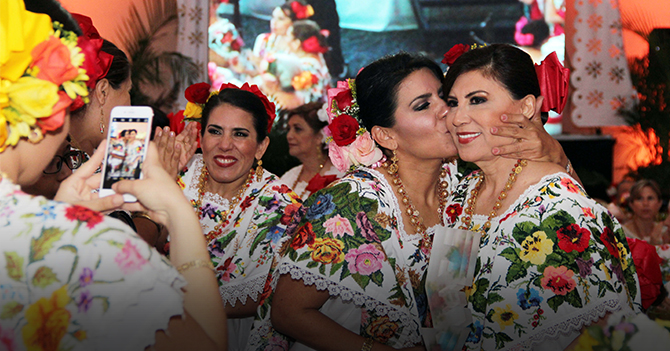The notion of a specific Mexican gown has captured the imagination of many across the globe, each interpretation shaped by cultural perspectives and stereotypes.
Amongst the diverse perceptions, some envision this attire as a fusion of boots and a sombrero, emblematic of the country’s ranching heritage. Meanwhile, others associate it with the iconic “China Poblana” gown, a vibrant blend of indigenous and Spanish influences, reflecting Mexico’s rich history. Interestingly, even within Mexico, there exists a spectrum of opinions, with some locals also subscribing to these notions. This collective fascination showcases the power of cultural symbols to transcend borders and highlight the complexity of identity in a globalized world.
Mexican clothing is a testament to the intricate interplay between colonial traditions and indigenous heritage, forming a tapestry that beautifully encapsulates the nation’s diverse culture. The colonial era introduced European garments like ruffled dresses and suits, which intertwined with the intricate craftsmanship of indigenous textiles and designs. These textiles, rooted in centuries-old techniques and symbols, infuse the clothing with a deep sense of history and cultural significance. From the intricate embroidery of Oaxacan huipils to the vivid patterns of Mayan textiles, every piece of Mexican attire is a living testament to the fusion of cultures that have shaped the country over centuries. This harmonious blend serves as a reminder of the enduring legacy of both indigenous roots and colonial influences, which together compose the vibrant mosaic of Mexican identity.

The “China Poblana” gown holds a significant place in Mexi- can cultural imagery, often portrayed as a representative dress that embodies the nation’s history and identity. This attire is characterized by its vivid colors, intricate embroidery, and the
fusion of indigenous and Spanish influences. Legend has it that a woman named Catarina de San Juan, who arrived in Mexico as a slave from India or the Philippines, became known as “La China Poblana.” She is said to have adopted local customs and integrated them with her own culture, creating a unique blend that eventually manifested in the gown. While the “China Poblana” gown is undoubtedly a captivating symbol of Mexico’s rich cultural heritage, it’s important to recognize that Mexico’s diverse regions boast an array of traditional garments, each with its own historical and cultural significance. Therefore, while the “China Poblana” gown has gained prominence as an emblematic attire, it is just one thread in the intricate fabric of Mexico’s sartorial tapestry.
Beyond the iconic “China Poblana” gown, Mexico’s cultur- al wardrobe encompasses a rich array of indigenous-inspired attire that proudly reflects the nation’s diversity. The Tehuana Oaxacan dress, with its bold colors and intricate embroidery, is a testament to the strength and resilience of the women of Oaxaca. Jalisco’s charros and escaramuzas outfits encapsulate the enduring spirit of Mexican ranching culture, characterized by their elegant yet practical attire.

Meanwhile, the Yucatecan huipil stands as a testament to the Mayan heritage, with its intricate weavings and vibrant patterns telling stories of ancient traditions. Each of these garments is a vibrant thread woven into the fabric of Mexican history, illustrating the vast spectrum of indigenous groups that have enriched the nation’s culture throughout its evolution. Together, these di- verse garments form a tapestry that celebrates the profound and enduring essence of Mexico’s cultural mosaics.
CLICK HERE TO READ THE ARTICLE ON OUR WEEKLY GAZETTE
TYT Newsroom


